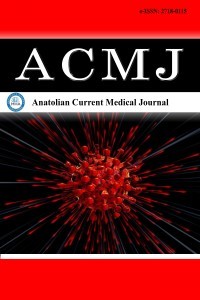1.
Bellani G, Laffey JG, Pham T, et al. Epidemiology, patterns of care, and mortality for patients with acute respiratory distress syndrome in intensive care units in 50 countries. Jama. 2016;315(8):788-800. doi:10. 1001/jama.2016.0291
2.
Linko R, Okkonen M, Pettilä V, et al. Acute respiratory failure in intensive care units. FINNALI: a prospective cohort study. Intensive Care Med. 2009;35(8):1352-1361. doi:10.1007/s00134-009-1519-z
3.
Roupie E, Lepage E, Wysocki M, et al. Prevalence, etiologies and outcome of the acute respiratory distress syndrome among hypoxemic ventilated patients. SRLF Collaborative group on mechanical ventilation. Société de Réanimation de Langue Française. Intensive Care Med. 1999;25(9):920-929. doi:10.1007/s001340050983
4.
Mirabile VS, Shebl E, Sankari A, Burns B. Respiratory failure in adults. StatPearls (serial online) 2023 June 11 (cited 2024 December 20). Available from: https://www.ncbi.nlm.nih.gov/books/NBK526127.
5.
Lagina M, Valley TS. Diagnosis and management of acute respiratory failure. Crit Care Clin. 2024;40(2):235-253. doi:10.1016/j.ccc.2024.01.002
6.
Taylor BE, McClave SA, Martindale RG, et al. Guidelines for the provision and assessment of nutrition support therapy in the adult critically ill patient: society of critical care medicine (SCCM) and American society for parenteral and enteral nutrition (A.S.P.E.N.). Crit Care Med. 2016;44(2):390-438. doi:10.1097/CCM.0000000000001525
7.
Singer P, Doig GS, Pichard C. The truth about nutrition in the ICU. Intensive Care Med. 2014;40(2):252-255. doi:10.1007/s00134-013-3162-y
8.
Kondrup J, Rasmussen HH, Hamberg O, Stanga Z. Nutritional risk screening (NRS 2002): a new method based on an analysis of controlled clinical trials. Clin Nutr. 2003;22(3):321-36. doi:10.1016/s0261-5614(02) 00214-5
9.
Heyland DK, Dhaliwal R, Jiang X, Day AG. Identifying critically ill patients who benefit the most from nutrition therapy: the development and initial validation of a novel risk assessment tool. Crit Care. 2011; 15(6):1-11. doi:10.1186/cc10546
10.
Singer P, Blaser AR, Berger MM, et al. ESPEN guideline on clinical nutrition in the intensive care unit. Clin Nutr. 2019;38(1):48-79. doi:10. 1016/j.clnu.2018.08.037
11.
Rahman A, Hasan RM, Agarwala R, Martin C, Day AG, Heyland DK. Identifying critically-ill patients who will benefit most from nutritional therapy: Further validation of the "modified NUTRIC" nutritional risk assessment tool. Clin Nutr. 2016;35(1):158-162. doi:10.1016/j.clnu.2015. 01.015
12.
Machado Dos Reis A, Marchetti J, Forte Dos Santos A, Franzosi OS, Steemburgo T. NUTRIC score: isolated and combined use with the NRS-2002 to predict hospital mortality in critically ill patients. JPEN J Parenter Enteral Nutr. 2020;44(7):1250-1256. doi:10.1002/jpen.1804
13.
Halpin DMG, Criner GJ, Papi A, et al. Global initiative for the diagnosis, management, and prevention of chronic obstructive lung disease. The 2020 GOLD science committee report on COVID-19 and chronic obstructive pulmonary disease. Am J Respir Crit Care Med. 2021;203(1): 24-36. doi:10.1164/rccm.202009-3533SO
14.
McClave SA, Taylor BE, Martindale RG, et al. Guidelines for the provision and assessment of nutrition support therapy in the adult critically ill patient: society of critical care medicine (SCCM) and American society for parenteral and enteral nutrition (A.S.P.E.N.). JPEN J Parenter Enteral Nutr. 2016;40(2):159-211. doi:10.1177/0148607115621863
15.
Halpern NA, Pastores SM. Critical care medicine in the United States 2000-2005: an analysis of bed numbers, occupancy rates, payer mix, and costs. Crit Care Med. 2010;38(1):65-71. doi:10.1097/CCM.0b013e 3181b090d0
16.
Vincent JL, Akça S, De Mendonça A, et al. The epidemiology of acute respiratory failure in critically ill patients(*). Chest. 2002;121(5):1602-1609. doi:10.1378/chest.121.5.1602
17.
Villgran VD, Lyons C, Nasrullah A, Clarisse Abalos C, Bihler E, Alhajhusain A. Acute respiratory failure. Crit Care Nurs Q. 2022;45(3): 233-247. doi:10.1097/CNQ.0000000000000408
18.
Sbaih N, Hawthorne K, Lutes J, Cavallazzi R. Nutrition therapy in non-intubated patients with acute respiratory failure. Curr Nutr Rep. 2021; 10(4):307-316. doi:10.1007/s13668-021-00367-z
19.
Grant JP. Nutrition care of patients with acute and chronic respiratory failure. Nutr Clin Pract. 1994;9(1):11-17. doi:10.1177/011542659400900111
20.
Canales C, Elsayes A, Yeh DD, et al. Nutrition risk in critically ill versus the nutritional risk screening 2002: are they comparable for assessing risk of malnutrition in critically ill patients? JPEN J Parenter Enteral Nutr. 2019;43(1):81-87. doi:10.1002/jpen.1181
21.
Raslan M, Gonzalez MC, Torrinhas RS, Ravacci GR, Pereira JC, Waitzberg DL. Complementarity of Subjective Global Assessment (SGA) and Nutritional risk screening 2002 (NRS 2002) for predicting poor clinical outcomes in hospitalized patients. Clin Nutr. 2011;30(1):49-53. doi:10.1016/j.clnu.2010.07.002
22.
Gonzalez MC, Bielemann RM, Kruschardt PP, Orlandi SP. Complementarity of NUTRIC score and Subjective Global Assessment for predicting 28-day mortality in critically ill patients. Clin Nutr. 2019; 38(6):2846-2850. doi:10.1016/j.clnu.2018.12.017
23.
Auiwattanakul S, Chittawatanarat K, Chaiwat O, et al. Effects of nutrition factors on mortality and sepsis occurrence in a multicenter university-based surgical intensive care unit in Thailand (THAI-SICU study). Nutrition. 2019;58:94-99. doi:10.1016/j.nut.2018.06.021
24.
Maciel L, Franzosi OS, Nunes DSL, et al. Nutritional risk screening 2002 cut-off to identify high-risk is a good predictor of ICU mortality in critically ill patients. Nutr Clin Pract. 2019;34(1):137-141. doi:10.1002/ncp.10185

